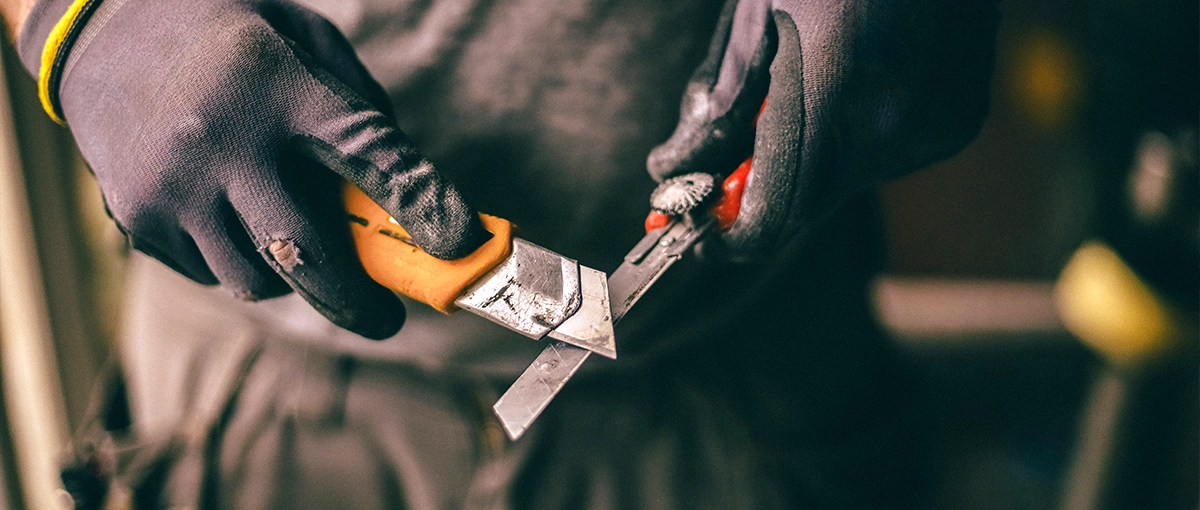How to Dispose of Utility Knife Blades

Utility knife blades are a small but significant part of any industrial operation. Whether you're cutting packaging, trimming materials, or working in a trade, these blades dull quickly and need to be replaced often. But what happens after that? Tossing them in the trash isn’t just careless—it’s dangerous. A few smart disposal methods can keep your workspace safe, protect sanitation workers, and prevent accidents down the line.
The Wrong Way to Get Rid of Blades
You’ve seen it before. A co-worker wraps a dull blade in a bit of tape, tosses it in the bin, and moves on. It seems safe enough—until a maintenance worker or janitor reaches in and slices their hand. Even worse is when blades get dumped loosely into a trash can, puncturing the bag and posing a hazard to anyone handling waste. A little laziness with disposal can cause serious injuries.
The Safe and Smart Approach
There are plenty of reliable ways to dispose of blades that take minimal effort. The key is containment. Keeping used blades secure prevents them from becoming a hazard, whether they’re headed to a landfill, recycling facility, or scrap metal processing center.
Dedicated Blade Disposal Containers
Many industrial suppliers sell hard plastic blade disposal containers. These function like sharps containers used for medical needles, ensuring blades stay locked inside until the whole unit is full and ready to be discarded. These containers are often inexpensive and designed to fit in toolboxes or workstations. If you go through a lot of blades, this is the best way to keep things safe without having to think too much about it.
DIY Options
If a commercial disposal container isn’t available, there are plenty of makeshift solutions that work just as well. A used metal can—like one from soup or coffee—makes an excellent blade disposal unit. Simply cut a slot in the lid, drop blades inside, and once it’s full, seal it shut with duct tape before tossing it. An old prescription bottle can work too, especially for smaller-scale operations.
For those who prefer a no-cost option, layers of cardboard work surprisingly well. Folding blades into a thick piece of cardboard before discarding prevents sharp edges from cutting through trash bags. Secure the whole thing with tape, and it’s safe to go into the garbage.
Recycling Blades the Right Way
Blades are made of metal, and metal is recyclable—but that doesn’t mean you can just toss them in a standard recycling bin. Loose blades can jam sorting equipment or injure workers at recycling facilities. Instead, check with local scrap yards or metal recycling centers. Many of these businesses accept blades as long as they’re properly contained, such as in a sealed tin or bottle.
Some blade manufacturers and industrial suppliers even offer take-back programs, allowing users to return used blades for proper recycling. If you go through large quantities of blades, it’s worth looking into whether your supplier has a system in place.
Keeping Workspaces and Job Sites Safe
Safe blade disposal isn’t just about personal responsibility—it’s about keeping workplaces hazard-free. At job sites, designated disposal points can prevent loose blades from getting left on workbenches, dropped on floors, or forgotten in tool bags. Some crews set up labeled blade collection bins near workstations, making disposal effortless.
In shared work environments, it helps to make safe disposal a standard practice. If someone’s regularly throwing blades in the trash without a second thought, a quick conversation about safer methods can prevent accidents before they happen.
What Happens to Blades After Disposal?
For blades that end up in landfills, proper containment ensures they don’t pose a risk during transport or waste processing. When recycled, blades are melted down and repurposed, often turning into new tools, construction materials, or automotive parts. Given how much steel gets reused in manufacturing, there’s a good chance the blade you throw out today could come back in a different form down the line.
Wrapping It Up (Safely, Of Course)
Disposing of blades properly doesn’t take much effort, but it makes a world of difference. Whether it’s using a dedicated container, repurposing a metal tin, or finding a recycling option, keeping used blades out of harm’s way is just good practice. Next time you swap out a blade, take the extra step to dispose of it the right way—it’s a simple habit that keeps everyone a little safer.


